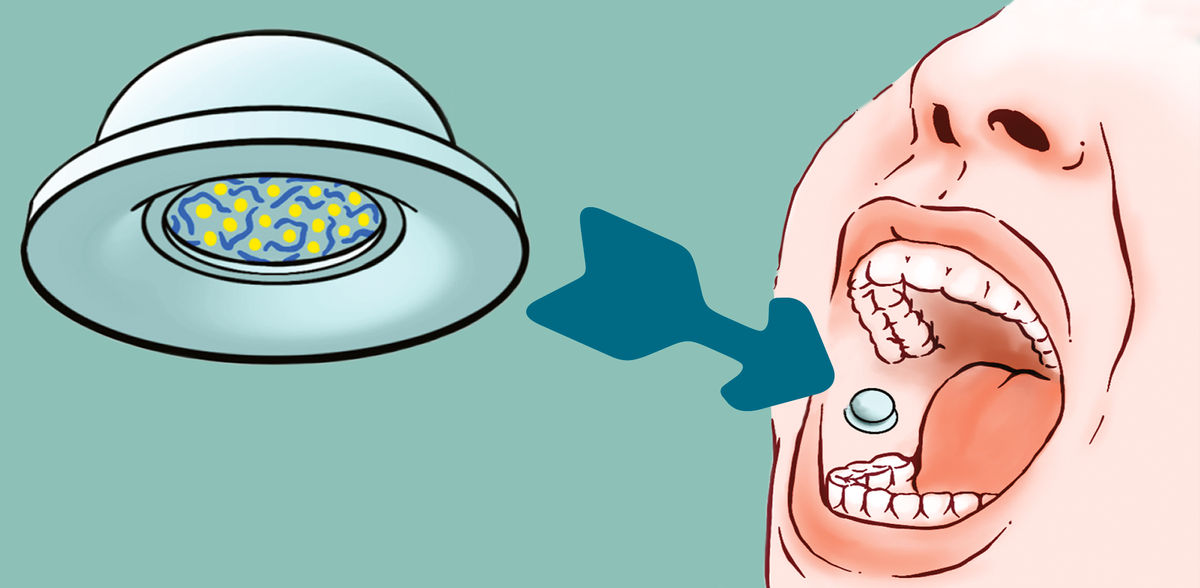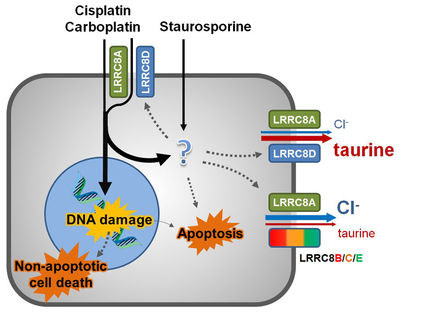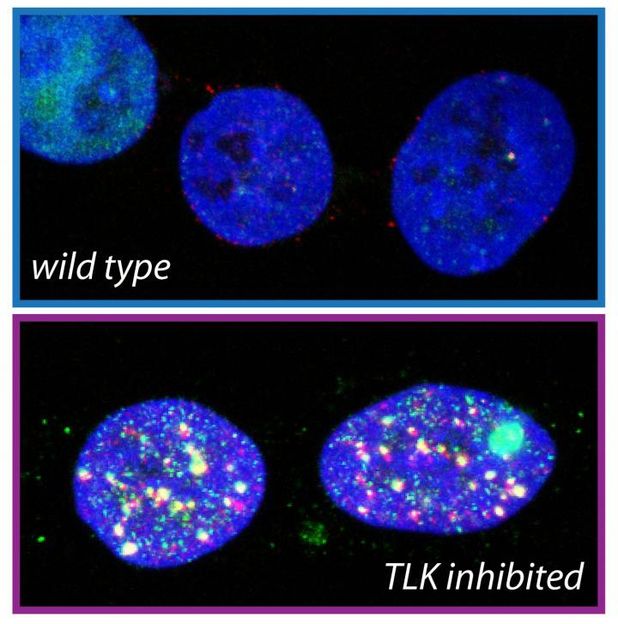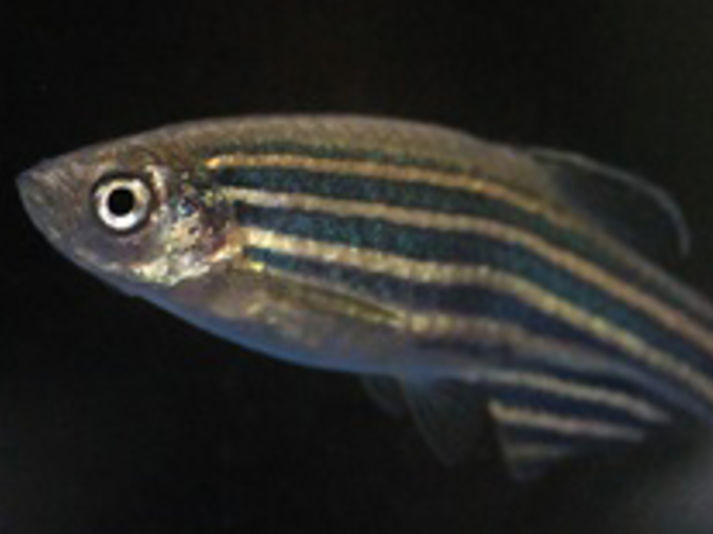How a suction cup delivers medications to the bloodstream
Painless administration of medications that previously could only be injected: Start-up Transire Bio wants to conquer the market
Researchers at ETH Zurich have developed a suction cup that allows medications to be absorbed through the mucosal lining of the cheeks. This new approach could spare millions of patients the pain and fear associated with injections.
Many of today’s medications belong to groups of relatively large molecules such as peptides. They are used to treat a wide range of diseases, including diabetes, obesity and prostate cancer. Unfortunately, taking these medications in tablet form is out of the question in most cases because they would break down in the digestive tract or remain too large to reach the bloodstream. Consequently, the patient’s only option is to receive their medication via injection.
A group of researchers at ETH Zurich have developed a suction cup capable of delivering medications comprising large molecules like peptides to the bloodstream via the mucosal lining of the cheek. The group is led by David Klein Cerrejon and Nevena Paunović, both of whom work at the Chair of Drug Formulation & Delivery headed by Jean-Christophe Leroux.
“It’s an entirely new method of delivering medications that could spare millions of people the fear and pain associated with injections,” says Paunović, who has received one of ETH Zurich’s coveted Pioneer Fellowships. Her aim is to bring the suction cup to market through the start-up Transire Bio.
Breaking through the cheek’s mucosal lining
The mucosal lining of the cheek isn’t particularly suitable for delivering medication to the bloodstream. Its dense tissue has so far presented a major obstacle, especially for large molecules like peptides. But the ETH researchers are now about to change this with their suction cup.
Patients press the suction cup – which measures around ten millimetres in diameter and six millimetres in height – onto the lining of their cheek with two fingers. This produces a vacuum that stretches the lining, making it more permeable to the drug contained within the cup’s dome-shaped hollow. But that alone isn’t enough for the drug to reach the blood vessels.
The researchers have thus supplemented the drug with an endogenous agent that fluidises the cell membranes, allowing the drug to penetrate to the deeper layers of tissue. Patients are advised to keep the suction cup on the inside of their cheek for a few minutes. That’s enough time for the drug to dissolve in saliva and enter their bloodstream directly via the now permeable mucosal lining.
Compared to the few oral formulations of peptides on the market, the suction cup developed by the ETH researchers supports the delivery of a wide range of medications without the need for any major technological adjustments.
From peppercorn to suction cup
The original idea for the suction cup came from Zhi Luo, a former postdoc under ETH Professor Leroux and now a professor himself working in China. At dinner with friends, he suddenly noticed he had half a peppercorn stuck to the inside of his oral cavity. Although uncomfortable, this experience gave him the idea of how to keep drugs in place on slippery surfaces. But before the team could turn the idea into a working prototype, they had a few problems to solve.
The biggest challenge was to identify the right shape of the suction cup. “We had to find out what geometry and how much of a vacuum were required to hold the suction cup in place on the mucosal lining of the cheek and to stretch it sufficiently without causing any damage,” Klein Cerrejon says. In addition to producing several prototypes, which the researchers designed and 3D printed themselves, this called for numerous tests using the mucosal lining of a pig’s cheek.
To find the right penetration-promoting agent, the researchers tested a broad range of substances of varying concentrations and under a microscope evaluated how the different mixtures penetrated the tissue. “Since the suction cup is a completely new delivery system, we had to experiment extensively before finding the right substance. It turned out that natural, endogenous substances are extremely well suited for this task,” Klein Cerrejon says.
Tests on dogs and humans
The researchers then moved on to testing their suction cup and the penetration-promoting agent in authorised trials on dogs, because dogs and humans have very similar mucosal lining in their cheeks. No dogs were harmed by the testing. The researchers were pleased with the results: “We could see from the blood samples that the suction cup efficiently delivered medications to the dogs’ bloodstreams,” Klein Cerrejon says.
So far, the team has also tested the empty suction cup on 40 people. Not only did the suction cup remain attached for 30 minutes but also received positive feedback from the people testing it. Most of the volunteers said that they would by far prefer the new delivery system over an injection.
On the way to market entry
Paunović – who completed her doctorate under Leroux – is a trained pharmacist and worked at a major drug company. She will lead the project as a Pioneer Fellow. “We have a prototype and have already patented the technology. Our next step is to manufacture the suction cup in a way that meets current pharmaceutical regulations,” she says.
The researchers will have to carry out further tests with this new delivery system in preparation for conducting a clinical trial on healthy volunteers. There are also several regulatory hurdles to clear before the suction cup hits the market. For this, the researchers need strong partners and sufficient funding. Since the peptide market is worth billions to the pharmaceutical industry, several companies have already voiced an interest.
Original publication
Other news from the department science
Most read news
More news from our other portals
Something is happening in the life science industry ...
This is what true pioneering spirit looks like: Plenty of innovative start-ups are bringing fresh ideas, lifeblood and entrepreneurial spirit to change tomorrow's world for the better. Immerse yourself in the world of these young companies and take the opportunity to get in touch with the founders.




























































